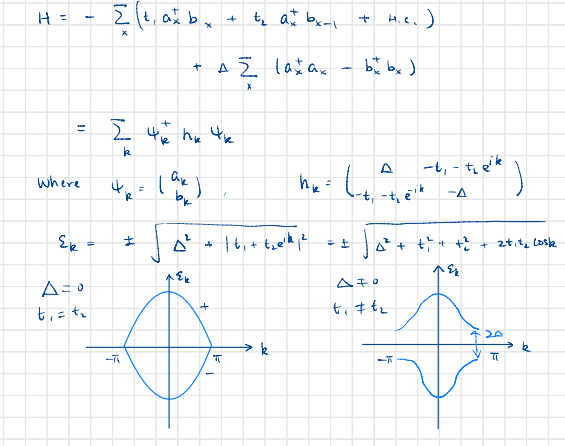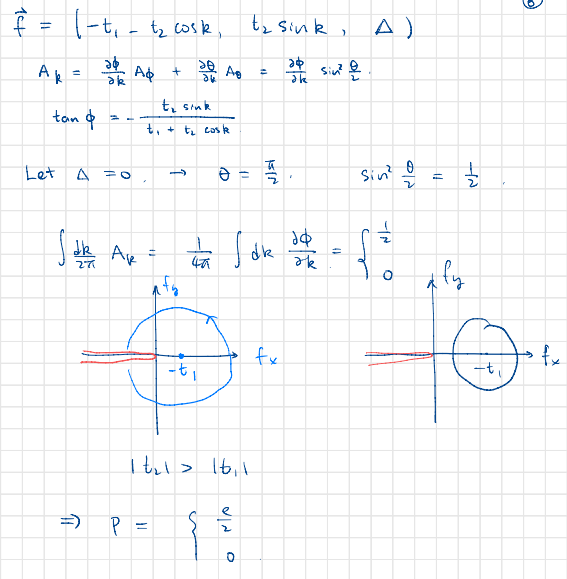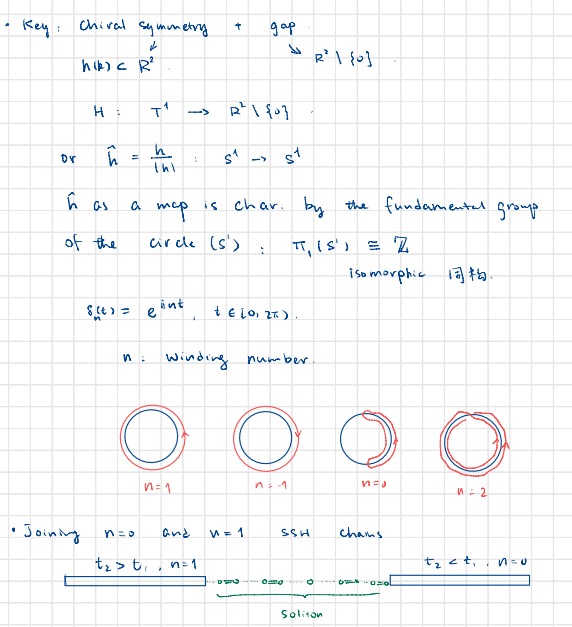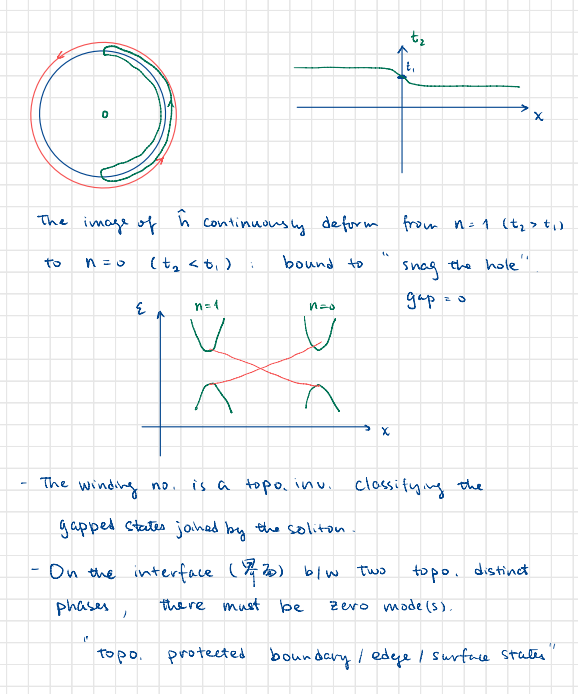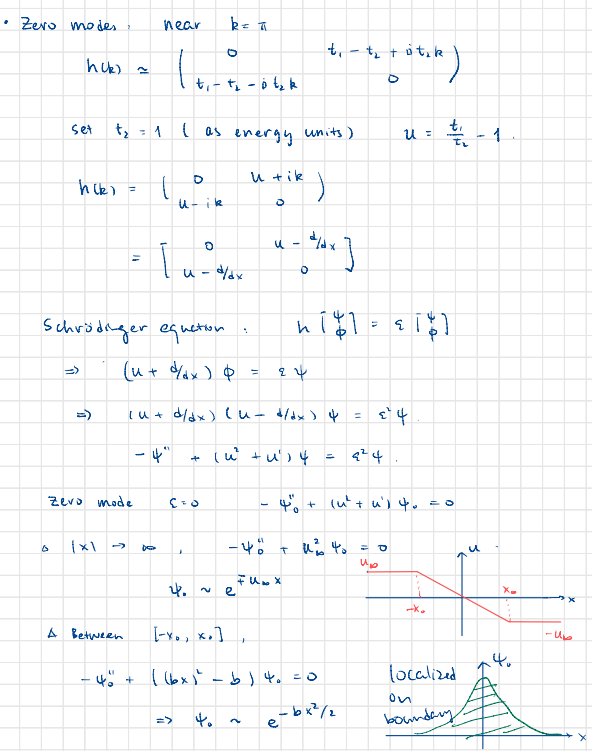Lecture 17
04/19/2023, Th.
Today:
Anomalous velocity
1D problems
1. Anomalous velocity
So we have
where
So combining with the expression for
which is the same as what we have obtained from semiclassical dynamics.
Note that
2. Adiabatic pumping in a 1D insulator
For an insulator at
Let's consider the adiabatic current, arising from the anomalous velocity of one fully occupied band (insulator)
in a cyclic process
Then the number of electrons transported across the system in one time period is
The region of integration is a rectangle
The integrand is periodic in the
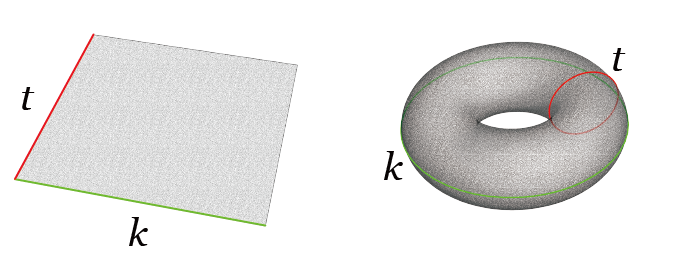
To compute the integral, we first make a change of variable
The integral is then written by virtue of the Stokes theorem as the line integral
Because the region
which actually implies that
where
So
At the same time, the phase the wavefunction gets by gets around the square region is
but since this is the same state as
which means
The physical interpretation of the above result is less exciting. It is like we are dragging the 1D crystal slowly at a constant speed, which gives a periodic
Nonetheless, the result is of great significance. We can state it very generally, that the integral of Berry curvature over a closed surface is an integer multiple of
The integer
We will see later, this leads to more interesting phenomena in transport.
3. Electric polarization
Polarization in a finite system is easy to think about. For a periodic insulating system (a metal cannot sustain a polarization), this becomes mind-boggling.
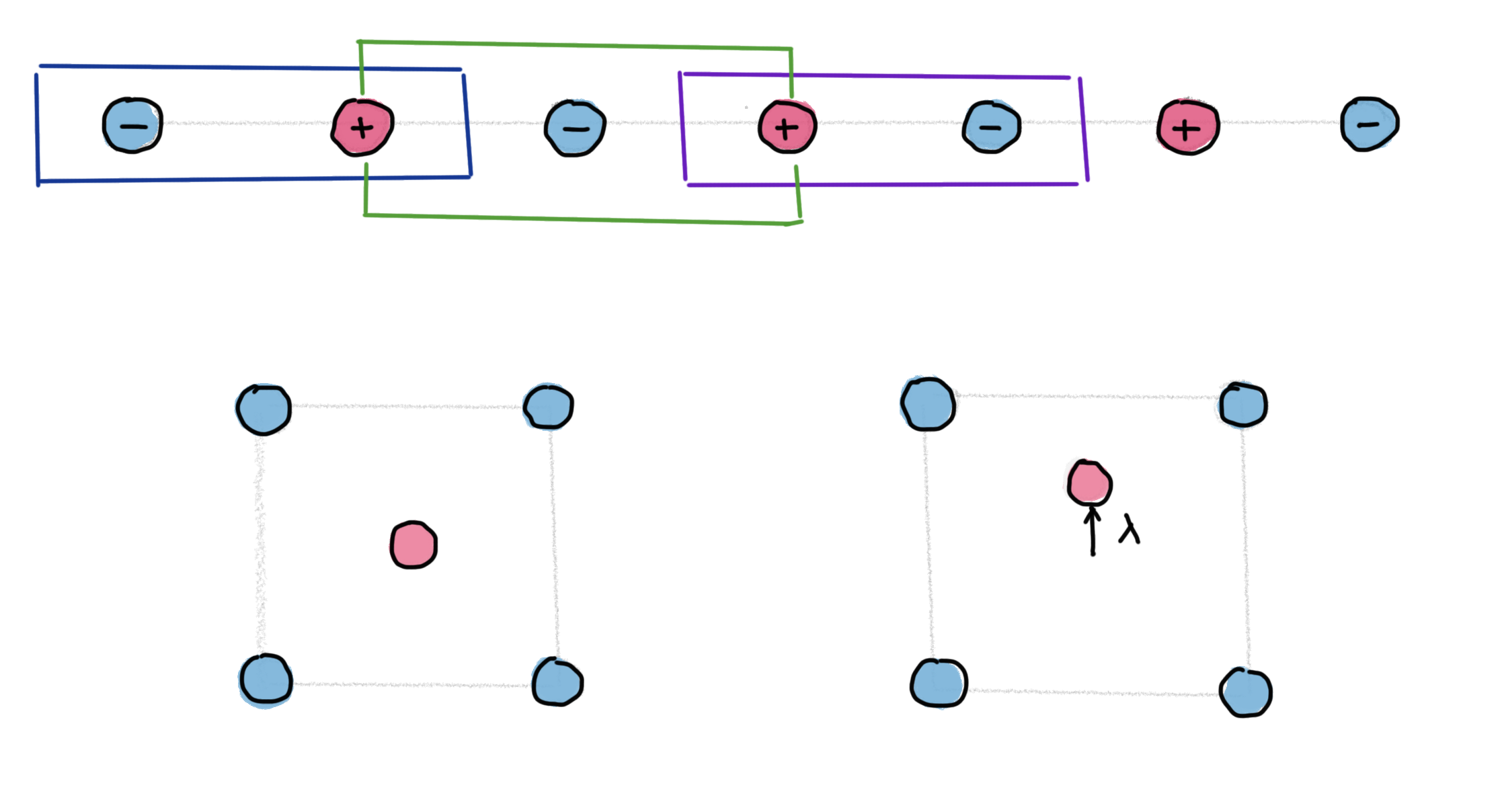
In a first approach, we may write
In order to use this definition, we need to assume a macroscopic but finite crystal. But the integral then has contributions from both the surface and the bulk regions, which cannot be easily disentangled. Moreover, if you construct a sample of size
The second approach can be formulated via
Now you have no problem with the surfaces. But this This definition is also flawed, as it depends on the shape and location of the unit cell.
To understand the contribution of electrons to the polarization, we need the so-called modern theory of polarization, developed by Resta, King-Smith and Vanderbilt, and others. Think about the Maxwell equation, the current density of bound charges is
we will focus on the first term, for non-magnetic materials. So we see polarization
Notice that this is a current in process that incurs the polarization, without external fields, in an insulator. So it can only be the adiabatic current. And it is lattice periodic.
To make our lives easier, let's just carry out the calculation for a 1D system.

An simplification can be made if we introduce the Berry connection into the formula
In the periodic gauge,
where the LHS and RHS are both periodic, as they should be. It follows then that
where
So, all of sudden we can define a
For example you can consider the polarization of a 1D crystal with inversion symmetry.
such that
But it is only determined modulo
3. SSH model again
